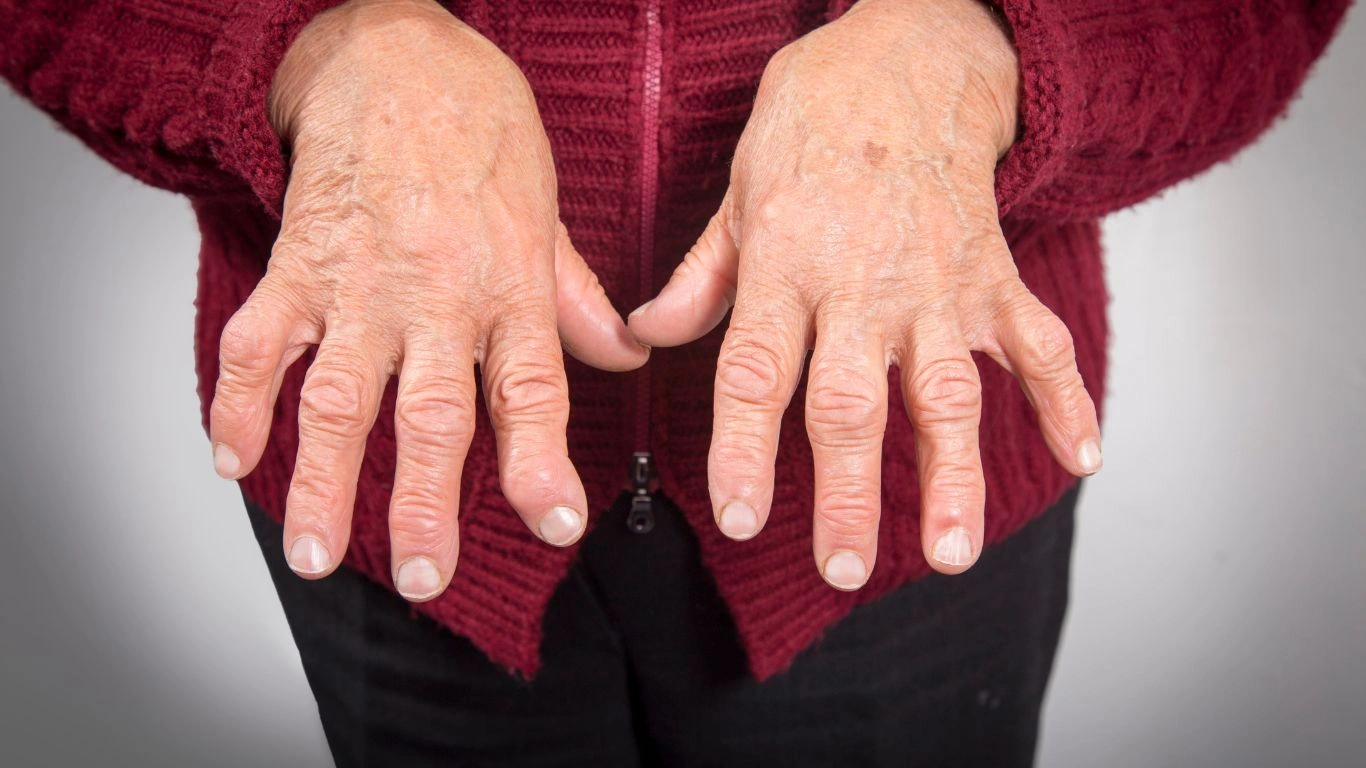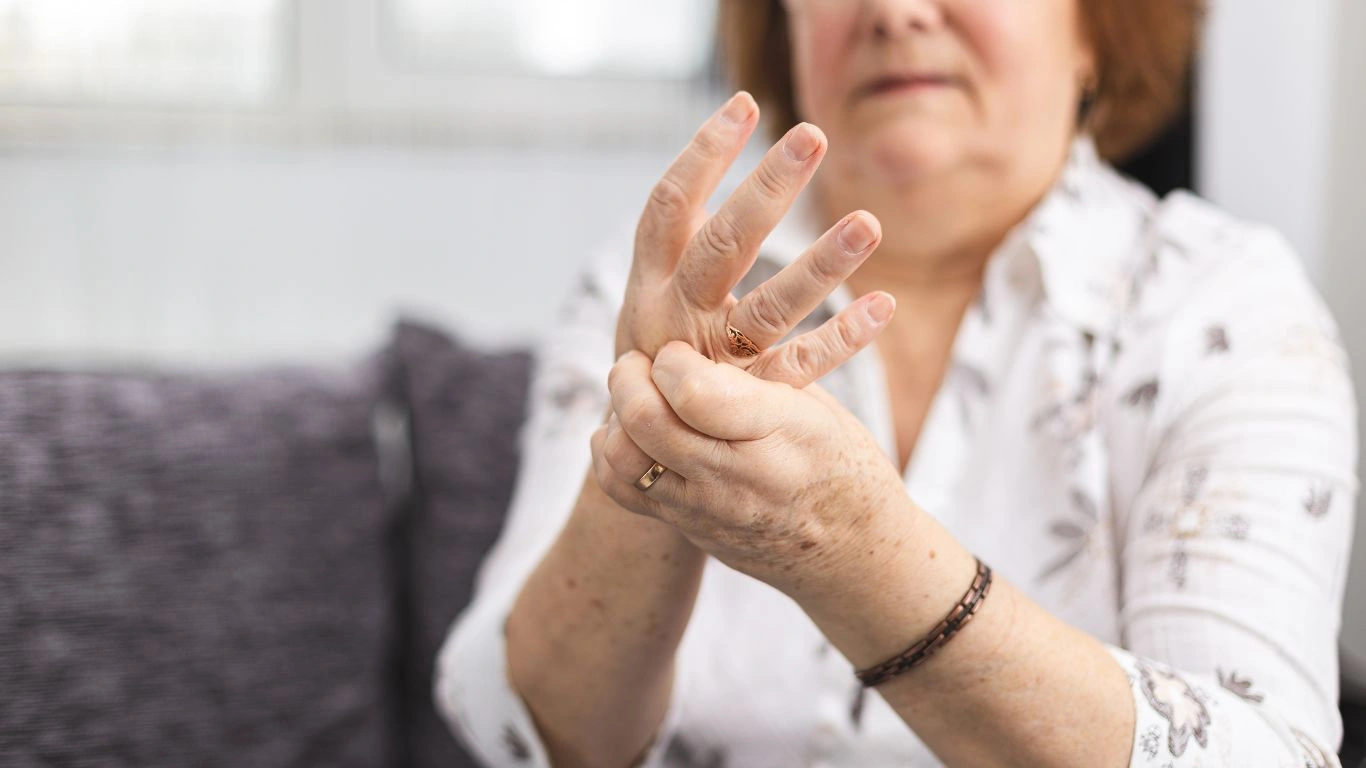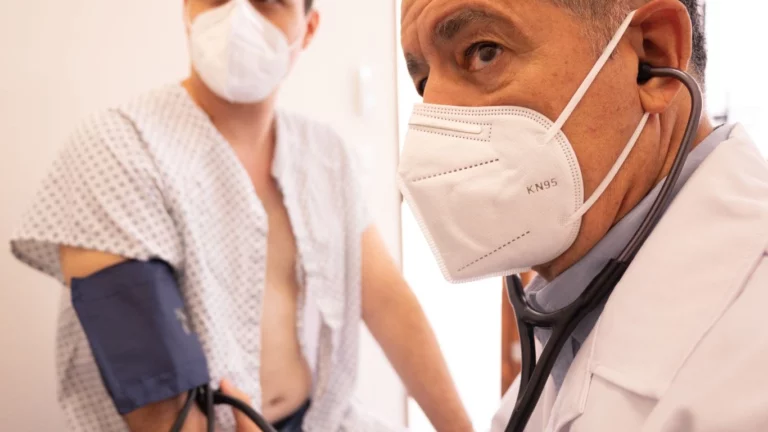Can Rheumatoid Arthritis Cause Osteoporosis? Prevent Bone Loss
Rheumatoid arthritis (RA) is a chronic autoimmune condition that causes inflammation in the joints, leading to pain, swelling, and stiffness. If you’ve ever been diagnosed with RA or know someone who has, you’re probably familiar with the physical challenges it brings. But what you might not know is that RA doesn’t just impact your joints—it can also affect your bones, leading to a condition known as osteoporosis. In this blog post, we’ll explore the connection between rheumatoid arthritis and osteoporosis, shedding light on why people with RA may be at increased risk of developing this bone-thinning disease.
Understanding the Link Between Rheumatoid Arthritis and Osteoporosis

Osteoporosis is a condition where bones become weak and brittle, making them more susceptible to fractures. This can be particularly dangerous for people with rheumatoid arthritis, as they already face joint pain and limited mobility. The question, though, is whether rheumatoid arthritis can cause osteoporosis—and the short answer is yes, it can. But let’s dive into why and how this happens.
Rheumatoid arthritis primarily targets the synovium, the lining of the joints. The inflammation can cause joint damage over time, and as the disease progresses, it can also interfere with the body’s ability to absorb calcium. Calcium is essential for bone health, so when the body doesn’t absorb enough, bones can become more fragile. On top of that, RA often leads to less physical activity due to pain and discomfort, and staying active is key for maintaining strong bones.
The Role of Inflammation in Bone Loss
One of the biggest contributors to osteoporosis in individuals with rheumatoid arthritis is chronic inflammation. RA triggers the immune system to attack healthy tissue, and this ongoing inflammation can have a negative impact on the bones. The inflammatory cytokines released in the body during RA flare-ups don’t just affect the joints—they can also promote bone resorption (the process by which bone tissue is broken down and minerals like calcium are released into the bloodstream). This process leads to a loss of bone density, making the bones more vulnerable to fractures.
Studies have shown that the higher the level of inflammation in the body, the greater the risk of osteoporosis. So, if you have RA and experience frequent flare-ups, your bones could be in danger. This is why it’s so important to not just manage the joint pain of RA, but also to keep an eye on bone health.
Why People with Rheumatoid Arthritis Are at a Higher Risk of Osteoporosis

It’s not just the inflammation that increases osteoporosis risk in people with RA. Several factors contribute to this higher risk, and understanding these can help you take proactive steps in managing your health. Let’s take a look at some of the reasons why RA and osteoporosis often go hand in hand:
1. Medications Used to Treat RA
While medications are crucial for managing rheumatoid arthritis and reducing inflammation, some of them can have side effects that increase the risk of osteoporosis. For example, corticosteroids (such as prednisone) are commonly prescribed to help control inflammation in RA patients. However, long-term use of corticosteroids can interfere with bone formation and increase bone loss.
If you’ve been on steroids for an extended period, it’s essential to have regular bone density tests to monitor your bone health. Your doctor may also recommend taking calcium and vitamin D supplements to help mitigate the negative effects on your bones.
2. Reduced Physical Activity
Rheumatoid arthritis can make physical activity a challenge. Joint pain and stiffness often lead people with RA to avoid exercise, which can further contribute to bone loss. Weight-bearing exercises, like walking, running, or lifting weights, are essential for maintaining bone density, but people with RA might not be able to do these activities due to pain or mobility issues.
However, even gentle movement and low-impact activities like swimming or yoga can help improve bone strength and reduce the risk of osteoporosis. It’s important to find an exercise routine that works for you, and consulting with a physical therapist might be a good idea to get started safely.
3. Hormonal Changes
Rheumatoid arthritis tends to affect women more than men, and women are already at an increased risk of osteoporosis due to hormonal changes, especially after menopause. Estrogen plays a significant role in maintaining bone density, so the drop in estrogen levels that occurs after menopause can accelerate bone loss. When you add RA into the mix, the risk of osteoporosis is even higher.
If you’re post-menopausal and living with RA, it’s especially important to monitor your bone health. Hormone replacement therapy (HRT) might be an option to discuss with your doctor, as it can help maintain bone density, though it comes with its own set of risks and benefits that should be considered carefully.
Managing Both RA and Osteoporosis: Key Strategies

It’s not all doom and gloom—there are plenty of steps you can take to manage both rheumatoid arthritis and osteoporosis. Here are some tips that might help:
- Bone Density Testing: Regular bone density tests are essential for early detection of osteoporosis. These tests can help your doctor track your bone health and make necessary adjustments to your treatment plan.
- Medication Adjustments: If you’re on steroids or other medications that affect your bone health, talk to your doctor about alternatives or ways to minimize their impact on your bones.
- Supplements: Calcium and vitamin D are critical for bone health, so make sure you’re getting enough of these nutrients, either through your diet or supplements. Your doctor may also recommend other medications specifically designed to strengthen bones.
- Stay Active: While RA might limit your mobility, it’s still important to find ways to stay active. Low-impact exercises like walking, cycling, or swimming can help maintain bone density and improve joint function.
- Healthy Diet: Eating a balanced diet rich in calcium, vitamin D, and other nutrients that support bone health is key. Foods like leafy greens, dairy products, fish, and fortified cereals can give your bones the support they need.
Managing rheumatoid arthritis and osteoporosis can be challenging, but with the right care and strategies, it’s possible to live a full and active life. Always work closely with your healthcare team to tailor a plan that’s right for you.
How to Assess Your Risk of Osteoporosis if You Have Rheumatoid Arthritis

If you’ve been diagnosed with rheumatoid arthritis (RA), it’s crucial to assess your risk for osteoporosis and take steps to manage it. Osteoporosis can silently progress without obvious symptoms, making early detection vital. Fortunately, there are ways to measure and monitor your bone health, especially if you’re living with RA. Let’s talk about how you can take proactive steps to understand and address your risk for osteoporosis.
1. Talk to Your Doctor About Bone Density Testing
One of the first things you should do is schedule a bone density test, commonly known as a DEXA scan. This test measures the mineral density of your bones and can determine whether you’re at risk for osteoporosis. If your rheumatoid arthritis is active, or if you’ve been on long-term steroid treatment, a DEXA scan becomes even more critical. Regular testing allows your healthcare provider to catch bone loss early and develop a plan to help protect your bones from further damage.
I’ve had patients who were shocked to learn they had osteoporosis, simply because they didn’t realize the impact of their RA and medication on their bones. Early intervention, like starting a bone-strengthening medication or adjusting your lifestyle, can make a world of difference in preventing fractures later on. So, don’t wait for symptoms—get your bones checked out!
2. Keep Track of Your RA Flare-Ups
Another key factor in assessing your osteoporosis risk is how often you experience flare-ups of rheumatoid arthritis. Chronic inflammation, as we discussed earlier, is a major player in bone loss. If your RA is frequently flaring, your bones may be under constant attack. Keeping a journal of your flare-ups can help you and your doctor assess whether your inflammation levels are contributing to your bone health. Your doctor may recommend additional treatments or modifications to better manage your RA and inflammation.
Personally, I’ve seen firsthand how critical it is to control inflammation not just for joint health, but for overall well-being. When flare-ups are reduced or under control, the risk of osteoporosis can be significantly lowered, too. Plus, it’s easier to stay active when your joints aren’t constantly flaring up, which also helps protect your bones.
Best Practices for Preventing Osteoporosis in Rheumatoid Arthritis Patients

While rheumatoid arthritis does increase your risk of osteoporosis, there’s good news: there are plenty of strategies you can use to reduce that risk and protect your bones. Let’s go over some of the best practices that can help you manage both RA and osteoporosis, so you can maintain a good quality of life and keep your bones strong.
1. Focus on a Bone-Healthy Diet
A well-balanced, nutrient-rich diet is one of the most effective ways to protect your bones. I always emphasize the importance of getting enough calcium and vitamin D, as these two nutrients are essential for bone strength. Calcium helps to build and maintain bone mass, while vitamin D enhances calcium absorption. If you’re not getting enough through your diet, your doctor may recommend supplements to fill the gap.
Here are some foods you can incorporate into your diet to boost bone health:
- Leafy greens: Kale, collard greens, and broccoli are high in calcium.
- Dairy products: Milk, yogurt, and cheese are excellent sources of calcium and vitamin D.
- Fatty fish: Salmon, sardines, and mackerel are rich in vitamin D and omega-3 fatty acids.
- Fortified foods: Some cereals, juices, and plant-based milk (like almond milk) are fortified with calcium and vitamin D.
Make sure to aim for a balanced diet full of these foods to give your bones the nutrients they need to stay strong. And don’t forget to drink plenty of water to stay hydrated and support overall health!
2. Stay Active with Low-Impact Exercise
When you have rheumatoid arthritis, it’s easy to get discouraged about physical activity. Joint pain can make exercise seem impossible, but movement is crucial for bone health. Weight-bearing exercises like walking, running, or dancing help stimulate bone growth and maintain bone density. If joint pain is an issue, consider low-impact activities like swimming, biking, or yoga. These exercises help keep your body moving without putting too much strain on your joints.
Even a short walk each day can have a positive impact on your bones. I’ve always encouraged my patients to find an activity that works for them and stick to it. It’s not about running marathons—it’s about consistent, gentle movement to support both joint and bone health. Plus, staying active has the added benefit of improving mood and managing stress, which is so important when living with RA.
3. Medications to Strengthen Your Bones
If you have rheumatoid arthritis and are at risk for osteoporosis, medications to prevent bone loss might be necessary. Some of the treatments commonly prescribed for osteoporosis, like bisphosphonates (e.g., alendronate), can help strengthen bones. Your doctor may also recommend other medications like denosumab or romosozumab, depending on your specific needs and risk factors.
It’s also worth mentioning that biologic medications used to treat RA can help reduce inflammation and, as a result, help protect your bones. By controlling the underlying disease process, these medications can indirectly protect your bone health. However, it’s important to work with your doctor to determine the best course of treatment for both RA and osteoporosis.
The Importance of Regular Monitoring

Regular monitoring is a critical component of managing both rheumatoid arthritis and osteoporosis. Whether it’s through bone density testing, blood tests to monitor inflammation levels, or joint health assessments, keeping tabs on your health can help catch any issues early before they become more serious.
I often tell my patients that managing RA is a marathon, not a sprint. It’s all about making incremental changes that add up over time. By keeping an eye on your bone health and working with your healthcare team to create a personalized plan, you can significantly reduce your risk of osteoporosis and improve your overall quality of life.
Living Well with Both RA and Osteoporosis: Practical Tips for Everyday Life

Living with both rheumatoid arthritis (RA) and osteoporosis can feel overwhelming at times. Between managing joint pain, dealing with inflammation, and keeping your bones strong, it’s easy to feel like you’re constantly juggling multiple health concerns. But here’s the thing: with the right strategies in place, you can absolutely live well and thrive despite having both conditions. Over the years, I’ve worked with countless patients who have found ways to manage RA and osteoporosis and still lead active, fulfilling lives. Here are some practical tips that can help you do the same.
1. Build a Support System
One of the most important things you can do when living with RA and osteoporosis is build a strong support system. I can’t tell you how many times patients have shared with me how much of a difference it makes to have people who understand their challenges. Whether it’s a partner, a family member, a close friend, or a support group, having people to lean on can make all the difference in managing your health.
Support doesn’t just mean emotional support—it also extends to practical help. For example, having someone assist you with difficult tasks on flare-up days or remind you to take your medications can take a huge load off. Plus, being around people who encourage you to stay active, eat right, and take care of yourself helps keep your motivation high.
2. Adapt Your Environment to Reduce Fall Risk
With osteoporosis, falls can be a major concern, especially since the risk of fractures is higher. One way to minimize this risk is by making simple adjustments around your home to prevent falls. As someone who works with RA patients, I always recommend making sure your living space is as safe and accessible as possible. Here are some ideas:
- Remove tripping hazards: Keep your floors clear of rugs, wires, or clutter that could cause a fall.
- Install grab bars: In bathrooms or near stairs, grab bars can offer stability and support when moving around.
- Use non-slip mats: Placing non-slip mats in the shower and bathtub will help prevent slipping.
- Improve lighting: Make sure rooms and hallways are well-lit, especially at night, so you can avoid any unexpected obstacles.
These small adjustments can help you navigate your home more safely, reducing the risk of falls and fractures as you live with both RA and osteoporosis.
Bone-Boosting Supplements and Natural Remedies

When managing both rheumatoid arthritis and osteoporosis, supplements can play a key role in maintaining bone health. While I always recommend getting nutrients from food first, sometimes supplements are necessary to fill in the gaps. Here’s a rundown of some of the most important ones to consider:
1. Calcium
Calcium is the building block of strong bones, and if you have osteoporosis, getting enough calcium is essential. The recommended daily amount varies by age and gender, but most adults need around 1,000 to 1,200 mg per day. If you can’t get enough from dairy or other calcium-rich foods, consider taking a supplement. Just be sure to take calcium in smaller doses throughout the day to maximize absorption.
2. Vitamin D
Vitamin D helps your body absorb calcium and is crucial for bone health. If you’re not getting enough vitamin D from sunlight or food, a supplement can make a significant difference. Your doctor can test your vitamin D levels and recommend the right dosage for you, which typically ranges from 600 to 800 IU per day for adults, but it can vary depending on individual needs.
3. Omega-3 Fatty Acids
Omega-3s, found in fatty fish like salmon, as well as in supplements, are known for their anti-inflammatory properties. Since inflammation is a major factor in both RA and osteoporosis, omega-3 fatty acids may help reduce the inflammatory response in your body. I often recommend incorporating omega-3-rich foods or supplements into your diet as a way to help manage both RA flare-ups and bone health.
4. Collagen Supplements
Collagen is a protein that supports bone strength and joint health. As we age, our natural collagen production decreases, which can contribute to both joint degeneration and bone loss. Some studies suggest that collagen supplements may help increase bone mineral density and improve joint function in people with RA. It’s worth discussing with your healthcare provider if collagen supplements could be a beneficial addition to your regimen.
Living with Hope and Positivity
It’s completely understandable to feel overwhelmed by the dual challenge of managing both rheumatoid arthritis and osteoporosis. But remember, you are not alone. Many people live with both conditions, and with the right tools and support, you can lead a full and vibrant life. I’ve had patients who, despite their RA and osteoporosis, continue to travel, stay active, and pursue hobbies they love. It’s all about adapting and finding what works for you.
One thing I’ve noticed over the years is how empowering it can be to take control of your health. Whether it’s through staying active, eating well, taking your medications, or simply checking in with your doctor regularly, these small steps add up. And they can make a huge difference in your quality of life.
So, take heart. RA and osteoporosis don’t define you—they’re just a part of your health journey. By staying proactive and positive, you can thrive while managing both conditions.
References
If you’re interested in learning more about managing rheumatoid arthritis and osteoporosis, here are some helpful resources:
Remember to always consult with your healthcare provider before making changes to your treatment plan or starting new supplements. Your doctor can help you develop a personalized strategy for managing both RA and osteoporosis, ensuring you’re taking the right steps for your overall health.
Disclaimer: The content provided in this article is for informational purposes only and should not be considered as medical advice. Always consult with a healthcare professional for proper diagnosis and treatment options tailored to your individual needs.

Tarra Nugroho is a dedicated Nurse Practitioner with a strong foundation in family and preventive care. She brings both compassion and clinical expertise to her practice, focusing on patient-centered care and health education. As a contributor to Healthusias.com, Tarra translates medical knowledge into clear, empowering articles on topics like women’s health, chronic disease management, and lifestyle medicine. Her mission is simple: help people feel seen, heard, and informed—both in the clinic and through the content she creates. When she’s not caring for patients, Tarra enjoys weekend hikes, plant-based cooking, and curling up with a good health podcast.






